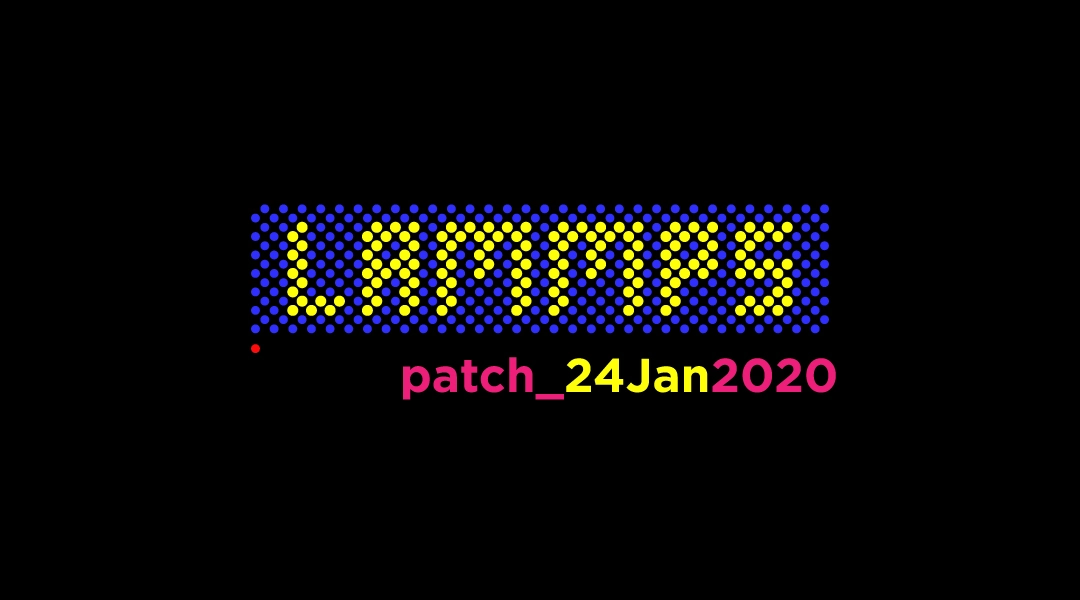
LAMMPS Patch Release Overview
Changes since the patch release 9 January 2020:
- new pair style mesocnt for mesoscopic modeling of (carbon) nanotubes (Philipp Kloza (U Cambridge), PR #1841
- new fix npt/cauchy for improved handling of variable cells with large deformation (Ronald Miller, Carlton U, Fabio Pavia, and Subrahmanyam Pattamatta, UMN) PR #1096
- new fix propel/self for self-propelling particles (Stefan Paquay, Brandeis U) PR #1847
- new fix wall/reflect/stochastic for multiple variants of stochastic reflecting walls (Quy-Dong To, Université Paris Est Marne la Vallée), PR #1691 , PR #1838
- added support for threaded FFTW3 in all versions of pppm and support for using cuFFT or KISSFFT on the GPU with KOKKOS when CUDA is enabled (Stan Moore (SNL), Sam Mish (U.C. Davis)), PR #1520
- new orient option to fix deposit (Tongtong Shen), PR #1685
- new quit option to message command for client/server coupling with the MESSAGE package (Steve Plimption, SNL), PR #1835
- new examples for using rerun and read_dump (Steve Plimpton, SNL) PR #1829
- new options ratio and subset for create_atoms plus type/ratio and type/subset for the set to populate an exact ratio or an exact number of lattice points of atoms when creating atoms or change the atom type with the set. This also includes a significant performance improvement when creating a very large number of atoms with create_atoms (Jake Gissinger, UC Boulder and Steve Plimpton, SNL), PR #603
- add support for read_dump and rerun to USER-ADIOS package (Norbert Podhorszki, ORNL) PR #1820
- updated ILP potential files and new files for bulk systems, improve energy conservation of ILP pair styles with dangling bonds (Wengen Ouyang, Tel Aviv U) PR #1843
- disallow pair_modify pair specially for styles from the GPU and USER-INTEL package (Axel Kohlmeyer, Temple U) PR #1834
- fix a logic error in reading potential files for pair style bop and updates to the potential files that were missing data. (Don Ward, SNL and Axel Kohlmeyer, Temple U) PR #1831
- added tool to check the consistency of lists of command styles in documentation (Axel Kohlmeyer, Temple U) PR #1832
- various small code updates, improvements, and bug fixes (multiple authors) PR #1811, PR #1830, PR #1833, PR #1836, PR #1837, PR #1845, PR #1848, PR #1850, PR #1852, PR #1853, PR #1857
- various updates to documentation, examples, readme files (multiple authors) PR #1828, PR #1837
Backward compatibility notice:
- no known backward compatibility issues
This release has 2 assets:
- Source code (zip)
- Source code (tar.gz)
Visit the release page to download them.
About LAMMPS
LAMMPS (Large-scale Atomic/Molecular Massively Parallel Simulator) is an open-source molecular dynamics simulator written in C++ from Sandia National Laboratories and is designed for parallel machines. LAMMPS models an ensemble of particles in a liquid, solid or gaseous state. It can model atomic polymeric, biological, metallic, or mesoscale systems using a variety of force fields and boundary conditions and is easily extensible.

LAMMPS Patch Release 24 Jan 2020
LAMMPS Patch Release Overview
Changes since the patch release 9 January 2020:
- new pair style mesocnt for mesoscopic modeling of (carbon) nanotubes (Philipp Kloza (U Cambridge), PR #1841
- new fix npt/cauchy for improved handling of variable cells with large deformation (Ronald Miller, Carlton U, Fabio Pavia, and Subrahmanyam Pattamatta, UMN) PR #1096
- new fix propel/self for self-propelling particles (Stefan Paquay, Brandeis U) PR #1847
- new fix wall/reflect/stochastic for multiple variants of stochastic reflecting walls (Quy-Dong To, Université Paris Est Marne la Vallée), PR #1691 , PR #1838
- added support for threaded FFTW3 in all versions of pppm and support for using cuFFT or KISSFFT on the GPU with KOKKOS when CUDA is enabled (Stan Moore (SNL), Sam Mish (U.C. Davis)), PR #1520
- new orient option to fix deposit (Tongtong Shen), PR #1685
- new quit option to message command for client/server coupling with the MESSAGE package (Steve Plimption, SNL), PR #1835
- new examples for using rerun and read_dump (Steve Plimpton, SNL) PR #1829
- new options ratio and subset for create_atoms plus type/ratio and type/subset for the set to populate an exact ratio or an exact number of lattice points of atoms when creating atoms or change the atom type with the set. This also includes a significant performance improvement when creating a very large number of atoms with create_atoms (Jake Gissinger, UC Boulder and Steve Plimpton, SNL), PR #603
- add support for read_dump and rerun to USER-ADIOS package (Norbert Podhorszki, ORNL) PR #1820
- updated ILP potential files and new files for bulk systems, improve energy conservation of ILP pair styles with dangling bonds (Wengen Ouyang, Tel Aviv U) PR #1843
- disallow pair_modify pair specially for styles from the GPU and USER-INTEL package (Axel Kohlmeyer, Temple U) PR #1834
- fix a logic error in reading potential files for pair style bop and updates to the potential files that were missing data. (Don Ward, SNL and Axel Kohlmeyer, Temple U) PR #1831
- added tool to check the consistency of lists of command styles in documentation (Axel Kohlmeyer, Temple U) PR #1832
- various small code updates, improvements, and bug fixes (multiple authors) PR #1811, PR #1830, PR #1833, PR #1836, PR #1837, PR #1845, PR #1848, PR #1850, PR #1852, PR #1853, PR #1857
- various updates to documentation, examples, readme files (multiple authors) PR #1828, PR #1837
Backward compatibility notice:
- no known backward compatibility issues
This release has 2 assets:
- Source code (zip)
- Source code (tar.gz)
Visit the release page to download them.
About LAMMPS
LAMMPS (Large-scale Atomic/Molecular Massively Parallel Simulator) is an open-source molecular dynamics simulator written in C++ from Sandia National Laboratories and is designed for parallel machines. LAMMPS models an ensemble of particles in a liquid, solid or gaseous state. It can model atomic polymeric, biological, metallic, or mesoscale systems using a variety of force fields and boundary conditions and is easily extensible.





.jpg?format=webp)